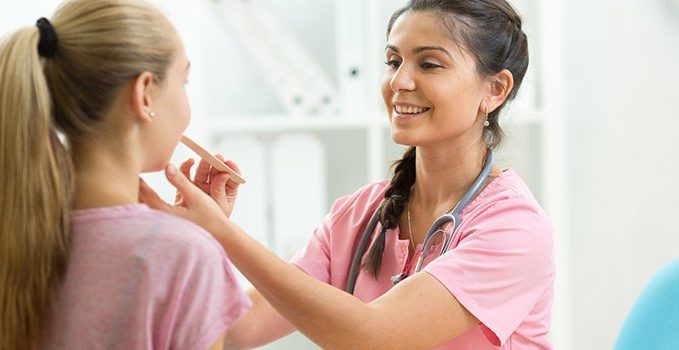We all know urgent care has been growing steadily, nearly since its inception. Hard data on the size of the marketplace can be hard to come by, though, as different sources apply varying definitions of what exactly constitutes an urgent care center. Similarly, we know proper utilization of urgent care services has tremendous potential to lower healthcare costs compared with visits to the emergency room. Again, though, the details can be hard to put a …
Read More
Successful Site Selection in Urgent Care
Urgent message: As a retail delivery channel for healthcare, success in urgent care depends on successfully executing the “retail” elements of the urgent care delivery model—the first of which is “location.” Alan A. Ayers, MBA, MAcc is Chief Executive Officer of Velocity Urgent Care and is Practice Management Editor of The Journal of Urgent Care Medicine. Urgent care differs from other types of medicine in that it adheres to a retail delivery model; successful urgent …
Read MoreThe Complementary Nature of Occupational Medicine and Urgent Care
As detailed in the first entry of our new occupational medicine series (Foundation of Occupational Medicine in the Urgent Care Setting, page 30), urgent care centers that offer occupational medicine services have reported the dual offerings are complementary in a way that helps balance the patient census and increase revenue. The data here, supplied by Dr. Max Lebow and reflecting Reliant Immediate Care in Los Angeles, illustrate that occ med visits tend to pick up …
Read MoreLaw Enforcement and Healthcare: When Consent, Privacy, and Safety Collide
Urgent message: Urgent care providers are likely to encounter law enforcement officers in the workplace at some point—and to be asked to comply with requests that may or may not violate a patient’s right to privacy, or compromise the urgent care center’s compliance with federal or state law or medical ethics. Understanding your legal rights and responsibilities is essential to fulfilling your obligations to both the patient and the law. Suzanne Cate Jones and Anne …
Read More
Get the Most Out of Providing Medicare Wellness Exams
Q: Are there specific requirements for Medicare wellness exams and who can perform them? A: Medicare offers an initial preventive physical examination (IPPE), which is also known as the “Welcome to Medicare” preventive visit or the annual wellness visit (AWV). Either a physician (a doctor of medicine or osteopathy) or a qualified nonphysician practitioner (a physician assistant, nurse practitioner, or certified clinical nurse specialist) can provide the services. The IPPE is a one-time initial examination …
Read More
Implications of HIPAA and Employee Confidentiality Rules on Positive Drug Test Results
Urgent message: In addition to drug testing their own employees, many urgent care centers offer drug testing as a service to other employers. Therefore, it’s important to understand the laws affecting the privacy of drug screen results. Alan A. Ayers, MBA, MAcc is Vice President of Strategic Initiatives for Practice Velocity, LLC and is Practice Management Editor of The Journal of Urgent Care Medicine Introduction It’s standard procedure throughout the country for employers to require …
Read More
2018 Current Procedural Terminology (CPT) Code Changes
There are 314 code changes in the CPT manual for 2018, with 172 new codes, 60 revised codes, and 82 deleted codes. Most of the changes affect surgery procedures, but the updates include several changes that are relevant to urgent care. For your convenience, we have listed these changes in expected relevance to urgent care: Radiology Codes for x-rays of the chest and abdomen have been deleted and replaced with codes based on the number …
Read More
Nurse-Only Visits in Urgent Care: An Analysis of Outcomes and Patient Satisfaction Relative to Traditional Care
Urgent message: As shown in an in-house study by one urgent care operator, protocol-driven, nurse-only care of specific presenting complaints may be one way to help curb healthcare spending while not compromising on quality of care or threatening patient-satisfaction scores. Kyle Coon and Brett Whyte, MD Abstract Basic healthcare costs are rising at a staggering and, it’s widely considered, unsustainable rate. As a result, lower-cost alternatives that maintain quality and satisfaction are being explored across …
Read MoreA Snapshot of Pediatric Urgent Care Operations
In October, we offered a glimpse at the operating hours of pediatric urgent care centers around the country. We also promised to share more on that growing segment of the urgent care marketplace—and this month we’re following through on that. The data below are drawn from a sample of 35 U.S. pediatric urgent care centers, and are part of a larger pool that we expect to be the subject of an expansive article in a …
Read More
Urgent Care 2.0: Health Systems Taking the Retail Approach to the Next Level
Urgent message: Spurred by disruptive market entrants and burgeoning consumerism, health systems are increasingly adopting retail principles to better meet consumers’ shifting expectations. Thus, urgent care stakeholders, either as standalone operators or partners with a hospital/health system, must further expand upon their retail offerings in order to fend off increased competition. Alan A. Ayers, MBA, MAcc is Vice President of Strategic Initiatives for Practice Velocity, LLC and is Practice Management Editor of The Journal of …
Read More